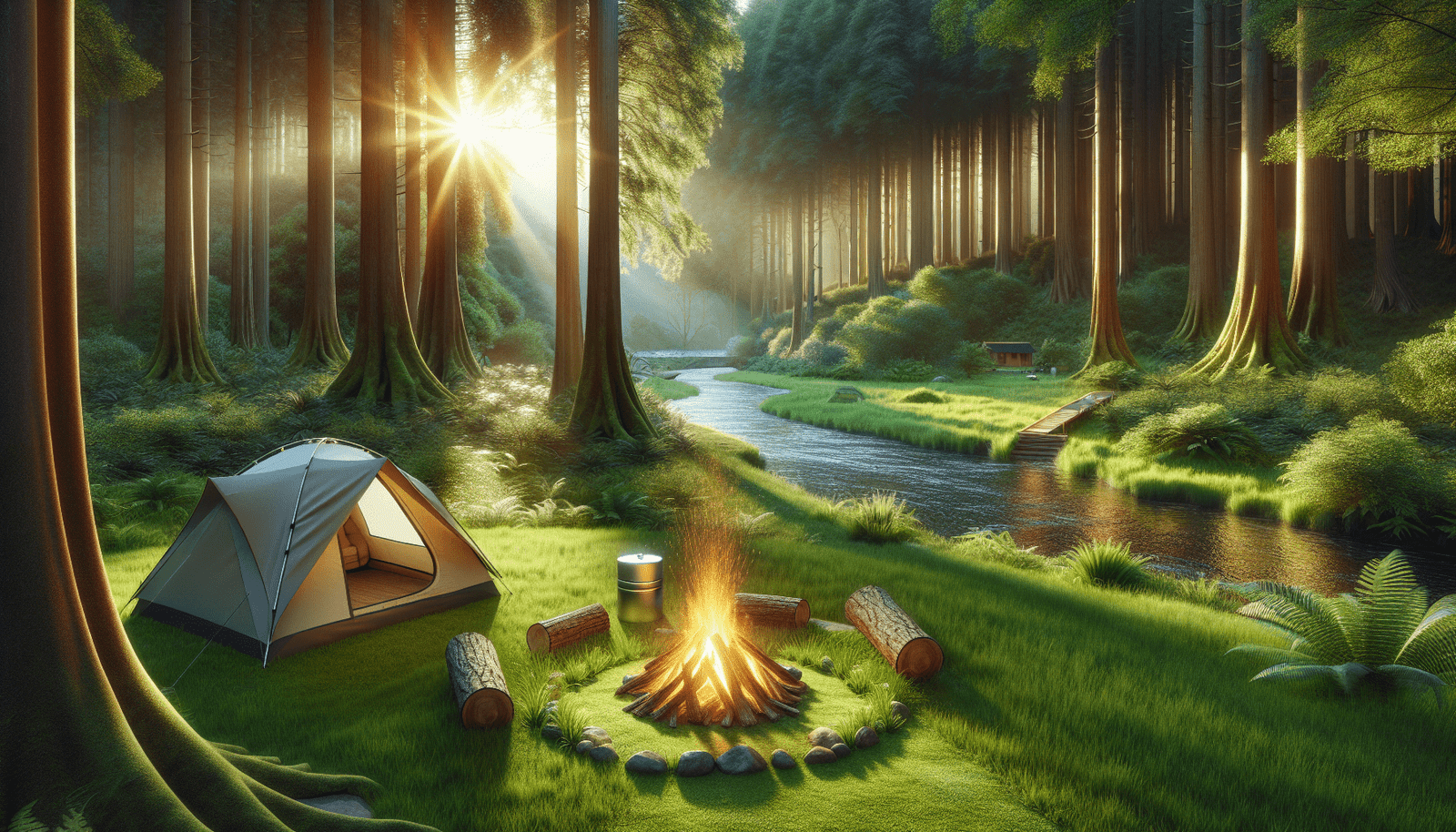When you’re planning a camping trip, one of the most crucial decisions you’ll make is Selecting the perfect tent site. Finding a spot that’s level, clear of debris, and sheltered from the wind can make your outdoor adventure comfortable and enjoyable. In this guide, you’ll discover key tips on what to look for in a tent site, ensuring you’re not only safe but also able to fully enjoy the beauty of nature. From staying dry through proper drainage to avoiding areas with potential wildlife hazards, these pointers will help you create a memorable and pleasant camping experience.
What Should One Look For in a Tent Site?

Introduction
Are you preparing for your next camping adventure and wondering, “What should one look for in a tent site?” You’re not alone! Selecting the right tent site is crucial for a comfortable, enjoyable, and safe camping experience. This friendly guide will help you identify key factors to consider when choosing the perfect spot to pitch your tent. From terrain and environmental considerations to safety and convenience, we’ve got you covered.
Key Factors to Consider
Terrain
When choosing a tent site, the first thing you’ll want to consider is the terrain. Your sleeping quarters should provide comfort and stability. Here’s what to look out for:
Flat and Level Ground
- Why it matters: Sleeping on an incline can lead to an uncomfortable night and may cause you to slide or roll around inside your tent.
- How to check: Walk around the area to feel for any slopes or dips.
- Tip: Use a groundsheet or footprint to test for levelness before setting up your tent.
Soft Surface
- Why it matters: A soft surface will make sleeping more comfortable and help absorb impact.
- How to check: Kneel or press down on the ground to gauge its firmness.
- Tip: Grass, pine needles, or sand can provide a softer sleeping surface compared to rocky or hard-packed earth.
Environmental Considerations
The environment around your camp can significantly affect your experience. Here’s what to look for:
Wind Protection
- Why it matters: High winds can make cooking difficult, affect the structural integrity of your tent, and lead to a chilly night.
- How to check: Look for natural windbreaks such as trees, large rocks, or hills.
- Tip: Set up your tent with the entrance facing away from the wind direction to minimize wind exposure.
Sun Exposure
- Why it matters: Direct sun can make your tent unbearably hot during the day, while insufficient sunlight can make mornings cold and damp.
- How to check: Observe the sun’s position and anticipate its path.
- Tip: Choose a spot with morning sunlight if you want to warm up quickly or afternoon shade to stay cool.
Drainage
- Why it matters: Poor drainage can lead to pooled water and a soggy tent floor.
- How to check: Look for low-lying areas or depressions that could collect water.
- Tip: Select a site that is slightly elevated, and avoid riverbanks or potential flash flood areas.
Safety Considerations
Your safety is of utmost importance. Always prioritize these aspects when selecting your tent site:
Distance from Water Sources
- Why it matters: Proximity to water sources such as rivers and lakes can pose risks such as flooding and encounters with wild animals.
- How to check: Ensure you’re camping at least 200 feet away from water bodies.
- Tip: This distance helps protect water sources from contamination and ensures you’re safe from sudden water level rises.
Avoiding Wildlife Paths
- Why it matters: Setting up near animal trails increases the likelihood of unwelcome animal encounters.
- How to check: Look for signs of wildlife such as droppings, tracks, or flattened grass.
- Tip: Camp away from berry bushes, fruit trees, or other natural food sources that may attract animals.
Fire Safety
- Why it matters: It’s critical to be prepared for potentially starting or encountering a wildfire.
- How to check: Look for areas free of overhanging branches and dry brush.
- Tip: Always have a bucket of water, sand, or a fire extinguisher nearby when making a campfire.
Convenience and Comfort
Convenience and comfort can make or break your camping experience. Here’s how to ensure both:
Proximity to Amenities
- Why it matters: Campsites with close access to restrooms, water taps, and cooking areas offer convenience.
- How to check: Refer to the campground map or scout around the area.
- Tip: Balance convenience with tranquility by measuring the distance and foot traffic.
Privacy
- Why it matters: Privacy enhances your camping experience by reducing disturbances from other campers.
- How to check: Look for natural screens such as bushes, trees, or rocks.
- Tip: Choose a site that feels secluded but remains close enough for safety and convenience.
Setting Up Your Tent
Once you’ve found the perfect tent site, proper setup is crucial. Here’s a step-by-step guide:
Clear the Area
- Why: To avoid damage to your tent and a bumpy sleeping surface.
- How: Remove rocks, sticks, and other debris from the area.
- Tip: Use a small rake or a makeshift broom if necessary.
Lay Down a Groundsheet or Footprint
- Why: To protect your tent floor from moisture and punctures.
- How: Spread the sheet flat and ensure it matches the tent’s footprint.
- Tip: Trim any excess material to prevent water pooling.
Set Up the Tent
- Why: A correctly pitched tent withstands weather conditions better and provides comfort.
- How: Follow the manufacturer’s instructions.
- Tip: Secure all guylines and stakes for added stability.
Organize Your Space
- Why: An organized campsite minimizes clutter and potential hazards.
- How: Arrange gear and supplies in specific areas such as sleeping, cooking, and waste disposal zones.
- Tip: Use a small collapsible table or hang gear from trees to keep items off the ground.
Advanced Considerations
Seasonal Factors
Camping conditions can vary significantly with the seasons. Here’s what to consider:
Summer
- Concerns: High temperatures, bugs, and more wildlife activity.
- Suggestions: Look for shaded areas, pack insect repellent, and opt for a tent with excellent ventilation.
Winter
- Concerns: Snow, extremely low temperatures, and fewer daylight hours.
- Suggestions: Choose a wind-protected spot, use a four-season tent, and pack extra insulation.
Spring
- Concerns: Mud, rain, and unpredictable weather patterns.
- Suggestions: Pick elevated sites, ensure good drainage, and bring a tarp.
Autumn
- Concerns: Cooler nights, falling leaves, and potential early snow.
- Suggestions: Camp in sunlit areas for warmth and keep an eye on weather forecasts.
Group Camping
When camping with a group, additional considerations come into play:
Space
- Why: More people require more space for tents, cooking, and socializing.
- How: Look for larger, open areas.
- Tip: Arrange tents in a circle to create a communal space.
Noise
- Why: More people can lead to more noise, which might disturb wildlife or other campers.
- How: Be mindful of noise levels, especially at night.
- Tip: Establish a quiet time within your group.
Shared Resources
- Why: Sharing resources can make the experience more efficient and enjoyable.
- How: Plan meals, gear, and tasks ahead of time.
- Tip: Assign duties to each group member to ensure a smooth camping experience.

Site-Specific Considerations
Different types of camping (e.g., backcountry, car camping) require different priorities. Here’s what to keep in mind:
Backcountry Camping
When venturing off the beaten path, you’ll want to be more self-reliant and cautious:
Leave No Trace
- Why: Preserving natural habitats is crucial.
- How: Follow Leave No Trace principles.
- Tip: Pack out all trash and minimize your impact.
Navigation
- Why: Backcountry locations can be challenging to navigate.
- How: Use a map, compass, or GPS.
- Tip: Mark your camp on the map and identify nearby landmarks.
Car Camping
Car camping offers more convenience but presents its own challenges:
Proximity to Parking
- Why: Close proximity to your vehicle adds convenience for loading and unloading gear.
- How: Select a site with nearby parking.
- Tip: Ensure your vehicle is parked in a designated area to avoid penalties.
Noise and Light Pollution
- Why: Campgrounds can be noisier and brighter, affecting your experience.
- How: Choose a quieter corner of the campsite.
- Tip: Use earplugs and an eye mask for better sleep.
Dispersed Camping
Camping on public lands outside of designated campsites offers solitude but requires more preparation:
Regulations
- Why: Each area has different rules regarding where you can camp.
- How: Research the regulations specific to the land you’re visiting.
- Tip: Obtain necessary permits if required.
Water Sources
- Why: Dispersed camping often doesn’t provide potable water.
- How: Carry enough water or have a reliable purification system.
- Tip: Plan your camping spot near a water source but maintain the recommended distance.
Conclusion
Selecting the perfect tent site involves a mix of common sense, safety, and comfort. By considering factors like terrain, environmental conditions, safety, and convenience, you can ensure a pleasant and memorable camping experience. Remember, every camping trip is unique, so adapt these guidelines to suit your specific situation. Happy camping!
